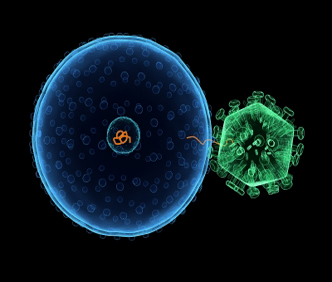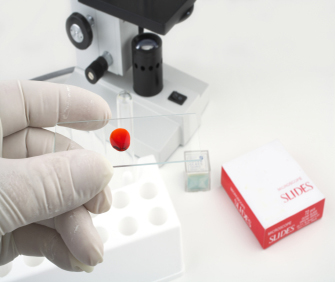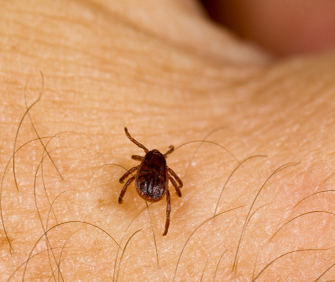




Disease Decontamination
The following information is a compilation from OSHA and the CDC. Please visit their websites for further information.
 Unfortunately the world we are currently living in is full of many communicable diseases. It has been found that 1 out of 5 people have a communicable disease. Statistics show 1 out of 300 hundred in New Jersey is currently infected with HIV. As many as 1 out of 20 people in the country have hepatitis and 1 out of 5 are infected with herpes
Unfortunately the world we are currently living in is full of many communicable diseases. It has been found that 1 out of 5 people have a communicable disease. Statistics show 1 out of 300 hundred in New Jersey is currently infected with HIV. As many as 1 out of 20 people in the country have hepatitis and 1 out of 5 are infected with herpes
According to OSHA there are two types of diseases readily discussed: infectious and communicable. OSHA defines an infectious disease as an “illness resulting from the invasion of the body by a bacteria, virus, fungi, or parasite.” OSHA defines a communicable disease as “a disease which can be readily spread from one person to another under certain conditions. A disease can be infectious but not communicable.”
Communicable diseases are spread two ways, direct contact and indirect contact. Direct contact transmission occurs when there is direct contact with infected body fluids or blood. Indirect transmission occurs when the infected individual spreads the disease to an object and then to another person.

Click on any of the links below to learn more.
Hepatitis B
Hepatitis C
HIV
Clostridium difficile
Scabies
Lice
MRSA
Bed Bugs
Hepatitis B
 Hepatitis B is transmitted by blood to blood contact, sexual contact, or indirect contact with a contaminated object or individual. Approximately 50% to 60% of infected persons do not know they are infected with hepatitis B. The first sign of a hepatitis B infection usually begins with a flu-like illness that may or may not develop into further symptoms such as yellow skin and itching, dark urine, whitish colored stools. There are vaccines to prevent the transmission of hepatitis B, but it is important to remember it only protects against type B not any other types of hepatitis.
Hepatitis B is transmitted by blood to blood contact, sexual contact, or indirect contact with a contaminated object or individual. Approximately 50% to 60% of infected persons do not know they are infected with hepatitis B. The first sign of a hepatitis B infection usually begins with a flu-like illness that may or may not develop into further symptoms such as yellow skin and itching, dark urine, whitish colored stools. There are vaccines to prevent the transmission of hepatitis B, but it is important to remember it only protects against type B not any other types of hepatitis.
Hepatitis C
Hepatitis C is transmitted by contact with blood, blood transfusion, needle stick injury and it’s also a sexually transmitted disease. The method of infection is similar to that of hepatitis B. The current rate of infection for hepatitis C is on the decline. In 1980 the average of new infections was 240,000. Fortunately, since then that number has dropped considerably with 19,000 new infections in 2006 and most of these infections are due to illegal injection of drugs.
Approximately 80% of infected individuals do not have signs or symptoms. Some signs include:
- Jaundice
- Fatigue
- Dark urine
- Abdominal pain
- Loss of appetite
- Nausea
Currently there is no vaccine for Hepatitis C. According to the CDC you should contact your health care professional for a blood test if any of the following apply:
- were notified that you received blood from a donor who later tested positive for hepatitis C.
- have ever injected illegal drugs, even if you experimented a few times many years ago
- received a blood transfusion or solid organ transplant before July, 1992
- were a recipient of clotting factor(s) made before 1987
- have ever been on long-term kidney dialysis
- have evidence of liver disease (e.g., persistently abnormal ALT levels)
Human Immunodeficiency Virus (HIV)
 HIV is a virus that attacks the immune system destroying its ability to fight infection. HIV progressed to its later stage is know as AIDS (acquired immunodeficiency syndrome). The infection is transmitted primarily through sexual contact and a person is considered communicable from the time they become infected. This disease can also be transmitted through the sharing of IV drug needles and syringes, as well as from mother to her infant during pregnancy and child birth.
HIV is a virus that attacks the immune system destroying its ability to fight infection. HIV progressed to its later stage is know as AIDS (acquired immunodeficiency syndrome). The infection is transmitted primarily through sexual contact and a person is considered communicable from the time they become infected. This disease can also be transmitted through the sharing of IV drug needles and syringes, as well as from mother to her infant during pregnancy and child birth.
The latest statistics released from the CDC state that in 2003 the total number of people living with HIV was approximately 1 million. One-fourth (24%-27%) are unaware they are infected. An estimated 47% of those infected were black, 34% were white, and 17% were Hispanic. Asians/Pacific Islanders and American Indians/Alaska Natives each represented roughly 1% of the HIV-infected population. In 2006 there were 49,528 or 5% of the people in New Jersey currently infected.
The window phase for an HIV infection is 1-12 weeks. This means from the time a person is exposed to the disease to the time they may test positive is anywhere from 1-12 weeks. HIV is not a highly infectious virus. It dies when exposed to light and air and requires a large number to cause disease.
Clostridium difficile
Clostridium difficile (C. diff or CDAD) is a bacterial infection that causes intestinal problems such as diarrhea or colitis. Those infected are typically the elderly and living in nursing homes. The clostridium difficile bacteria are found in the feces of an infected individual. People become infected when they touch a contaminated surface and then touch their mouths. CDAD is treated with a 10-day antibiotic regime prescribed by a doctor. In more serious cases hospitalization and surgery may be necessary.
CDAD is preventable. Persons should wash their hands with warm water and soap especially patients in hospitals, residents of nursing homes, employees of either of these settings, and visitors of either of these settings. Try to avoid touching surfaces in bathrooms and/or wash your hands immediately.
Scabies
Scabies is the infection of the skin by the microscopic mite Sarcoptes scabei. Infection is common and found all over the world affecting those of every race and nationatlity. It spreads rapidly and usually under conditions where there is skin to skin contact between people such as hospitals, institutions, child care facilities, and nursing homes.
Scabies is spread through prolonged contact with infected skin. It is typically not spread through a quick handshake or hug. Those that live together or have sexual contact are more likely to spread a scabies infection to each other. The elderly and those with weakened immune systems are more susceptible to a scabies infection.
The signs of a scabies infection include:
- Pimple-like irritations, burrows or rash of the skin, especially the webbing between the fingers; the skin folds on the wrist, elbow, or knee; the penis, the breast, or shoulder blades.
- Intense itching, especially at night and over most of the body.
- Sores on the body caused by scratching. These sores can sometimes become infected with bacteria.
A scabies infection will typically not show signs for 4-6 weeks from infection. However, a person who has previously had a scabies infection can show signs in just a few days after infection. There are treatments for scabies and the infected usually feel better in 2-3 weeks once treatment has begun.
Lice
 Lice are parasitic insects that can be found on various areas of a person’s body including the head and pubic region. They survive by feeding on human blood. The lice that infest different parts of the body are called different things. The three types of lice are known as:
Lice are parasitic insects that can be found on various areas of a person’s body including the head and pubic region. They survive by feeding on human blood. The lice that infest different parts of the body are called different things. The three types of lice are known as:
- Pediculus humanus capitis (head louse),
- Pediculus humanus corporis (body louse, clothes louse), and
- Pthirus pubis ("crab" louse, pubic louse).
A lice infection is spread through person to person contact. Dogs, cats, and other household animals do not spread the disease. Lice cannot jump or fly, they crawl from host to host. There are several over-the-counter remedies, as well as, prescription medicines for the treatment of lice.
MRSA
Methicillain-resistant Staphycoccuss aureaus (MRSA), is a pencilllin resistant bacteria which in the past was almost always found in the healthcare field. Developing new strains have found their way into mainstream society and into the places we frequent. Pools, hot tubs, locker rooms, prisons, restrooms, schools, day care centers, and playgrounds are all breeding grounds for MRSA. These infection-causing bacteria can spread within hours, and does not care how strong or healthy your body is.
Bio-Clean has a supersantitization program that we offer schools, sports clubs, and teams to combat MRSA. This program is tailored to each facility that we clean. With specialized equipment we eradicate harmful bacteria from locker rooms that have tile floors and all the touchable surfaces are sprayed and power washed with a disinfectant designed to kill MRSA and other bacteria. In the case of day care centers, all touchable surfaces are treated with a MRSA killing disinfectant. We not only clean after the outbreak, we offer maintenance programs before the facility has a critical incident.
Bio-Clean also offers consultation to agencies and their staff on facility changes and daily maintenance procedures that can lower the risk of infection within the facility. Although no cleaning or disinfecting program can eliminate all bacteria, both good and bad completely, we can help minimize the chance of spreading the disease.
Bed Bugs
 Bed bug infestations are back on the rise in recent years. They were particularly common in the latter part of the 20th century, but seemed to have declined and only manifested in developing countries. However, they are increasingly common in the United States, Canada, and the United Kingdom.
Bed bug infestations are back on the rise in recent years. They were particularly common in the latter part of the 20th century, but seemed to have declined and only manifested in developing countries. However, they are increasingly common in the United States, Canada, and the United Kingdom.
The common bed bug known as Cimex lectularius is a wingless, red-brown, blood sucking insect that can be as big as 7mm in length and has the average life span of 4 months to a year. They are nocturnal creatures that hide in areas such as crevices of the bed or under wallpaper during they day. Bed bugs have not been found to carry disease. They are known more as a nuisance then a threat. However, a property crawling with tiny bloodsucking insects is a very serious nuisance.
Homicides & Suicides | Belatedly Discovered Individuals | Jail Cells & Patrol Cars | Meth Labs | Tear Gas Vehicle Decontamination | Restoration Services | Hoarding
Allergy Solutions | Industrial Accidents | Graffiti | Diseases |Sewage | Animal Decontamination | Document Restoration | Water Damage Restoration
Bed Bug Remediation | Personnel | FAQs | Guarantee | Contact Us | News Stories | Links
Copyright © Andrew Yurchuck LLC T/A Classic Cleaning/Bio-Clean of New Jersey
All Rights Reserved 2008-2010
